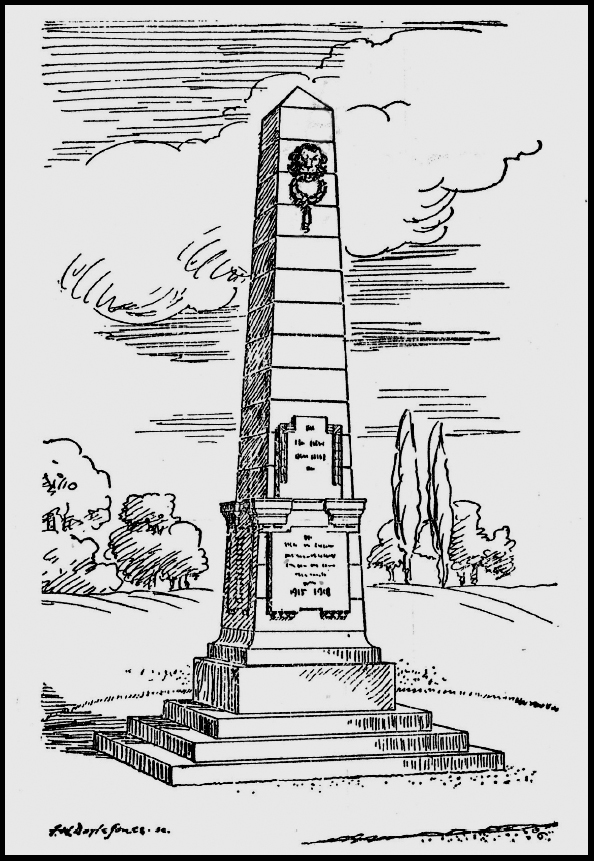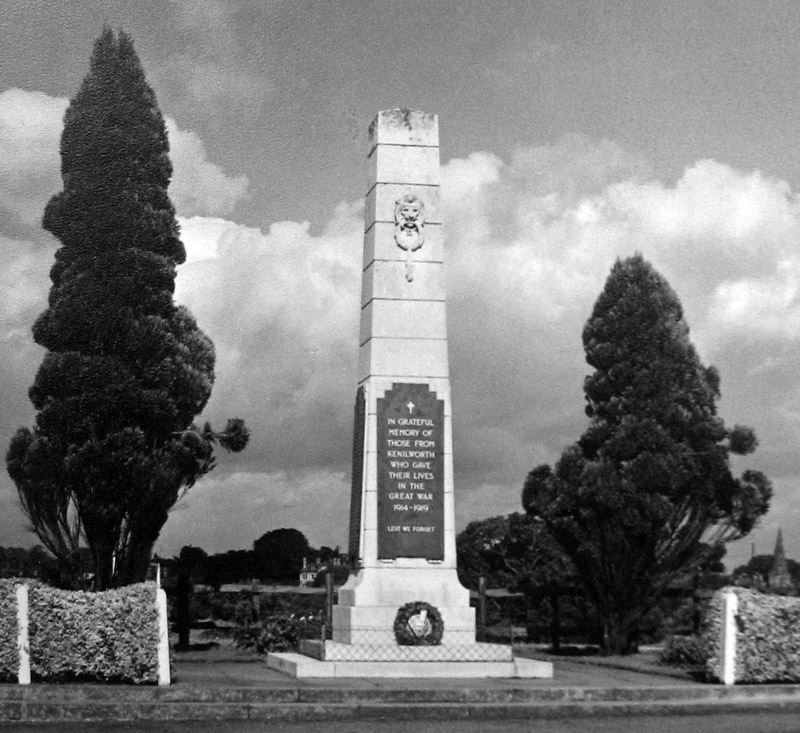The War Memorial
(Originally published on Kenilworth Vibes, 10th November 2023)
With 11th November upon us, it is timely to recall how Kenilworth’s War Memorial, now over 100 years old, came into being.
On Saturday 17th May 1919, Charles Randall called what became a well-attended meeting at the Abbey Hotel Drill Hall to discuss what form a memorial to the townsmen who had fallen in the Great War should take. Randall said it should be of “a lasting character, to be handed down from generation to generation”, and suggested that in the Abbey Fields would be “a lovely site”. The first suggestion came from Arthur Spicer whose son of the same name had died of pneumonia in May 1918 whilst serving with the Royal Warwickshire Regiment; he suggested a monument inscribed with the names of the fallen. Other suggestions included a cottage hospital, a gymnasium, public hall and reading room; the restoration of “the southern side of the cloister garth of St Mary’s monastery” to become a Garden of Peace at a cost of £2,500 was well received. A Public Hall for £3-4,000 became a popular suggestion. As unlikely as it may seem today, the least popular proposal was the first and the cheapest, the simple building of a monument. As the cost was to be met largely by public donations, one would think that the cheapest option would have found more favour.
As the response to the appeal for funds was far from what was expected, on 22nd January 1920 the War Memorial Committee decided after all to build the cheapest option, a cenotaph just inside the Abbey Fields opposite Abbey End. However, such constructions are not permitted under Abbey Fields Covenants but widening the road into the park is, and so the restriction was circumnavigated by ‘widening the highway’ to allow construction.
An open competition to design the memorial was won by Francis William Doyle-Jones, who had designed a number of Boer War Memorials and was to create many for commemorating the fallen of the Great War, a particularly pleasing design being on the seafront at Weymouth. Amongst his best-known earlier works are the Captain Webb memorial at Dover, and the Robert Burns memorial at Galashiels; Kenilworth had chosen well.
Despite the design being circulated donations, were in short supply; by the autumn of 1920 Charles Randall had contributed £100, and two others £50, out of a total of £350 raised of the required £1,000 or so. Doyle was approached to modify his design, he reduced it in height by a quarter, and the cost came down to £600, later reported to be £500.
By the end of 1921, the construction of the twelve Portland Stone blocks began and was completed by 11th February 1922. Between 2 and 3,000 (from a population of 6,700) braved the continuous rain to watch the unveiling on Sunday 26th February. More than 400 were in the procession including the Band of the Royal Warwickshire Regiment, the British Legion, Red Cross, Girl Guides, various Oddfellow lodges, Working Men’s Club, railwaymen and Post Office workers. Many were to get nowhere near the memorial due to the crowds, and such was the rain on umbrellas that only a few could hear the blessings and prayers. How poignant for the servicemen that the memorial unveiling should be in weather for them so reminiscent of the worst times in the trenches.
The memorial became the focus for parades but the Remembrance Service was always held in St Nicholas Church, until 1963 when the service was held at the memorial for the first time, making this year the 60th anniversary.

